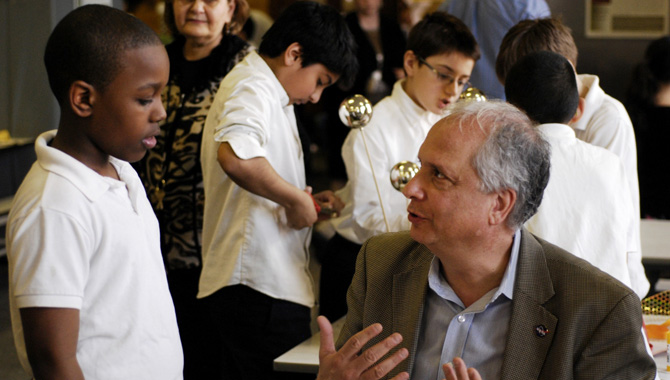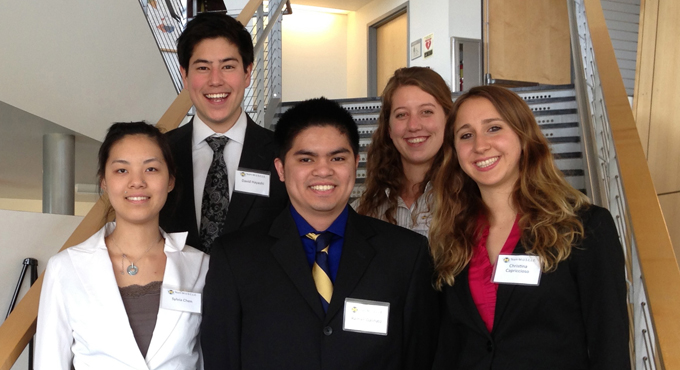
By Ed Hoffman
When we’re young, we are excited by our dreams. Our future possibilities seem endless and alluring.
This spring, I had the opportunity to step back into that childhood world of possibilities when I returned to my elementary school in Brooklyn. Going back to P.S. 199 (Frederick Wachtel school) after forty years was a profoundly moving experience. I’d been invited to talk with students from kindergarten to grade six about my experience working for NASA. My purpose was to use the powerful connection between art and science to communicate to the students that “you can do anything in your life, as long as you dream big and work hard.” I wondered and worried: Would I be relevant?
Then the day unfolded, and every minute was something I treasured. The students were alert, energized, passionate, and smart. They wanted to know more about life onboard the International Space Station, the challenges of landing the Mars Curiosity rover, and the aircraft of the future. The teachers were welcoming and inspiring. The art activity that followed my talk was highly interactive and engaging for the students—the combination of science and art can unlock new realities and big dreams. Many asked about working as engineers, project managers, artists, and scientists, and more than a few indicated they would see me in a few years. (They promised to be good bosses.) I walked away believing they could make that dream a reality.
As I reflected on that day, it occurred to me that most of the programs that inspired the students in my talk will be history by the time they would be able to join NASA in a decade or more. There will be new programs by then, of course, but the people who carry them out—today’s students—will need the knowledge and expertise that has enabled us to complete the construction of the space station while manning it continuously for over a decade and to land a car-sized rover in a crater on Mars. That knowledge will only live on and be available to them in the people who worked on these programs and the systems we design to preserve and share it.
NASA has come a long way since Apollo in its effort to capture knowledge from its flagship programs. The Shuttle Knowledge Console at Johnson Space Center is the go-to source for thirty years’ worth of knowledge about the Space Shuttle. Knowledge about the Ares I-X launch vehicle was captured very deliberately. The Mars program has made an intensive effort to document lessons from the innovative approach used to land Curiosity on the Martian surface. In the case of the International Space Station, the partner space agencies have developed a joint document of lessons learned based on their experience working collaboratively.
This knowledge is our real legacy to the students of P.S. 199 and other schools if they are to continue the work of space exploration and aeronautics research. There’s no question that the passion remains alive. They are counting on us to share what we know.
Dr. Ed Hoffman, NASA Chief Knowledge Officer, talks with P.S. 199 5th grader. This aspiring young student explains to Dr. Hoffman that he will one day soon be his boss and he will have to do what he asks him to do… he says, “I will be your boss one day.” – CITYarts Inc. copyright. Project produced and created by CITYarts with the professional advise of Lewis Peach.
Featured Image Credit: Photo courtesy of CITYarts, Inc. Photo taken by Berette Macaulay.
More Articles by Ed Hoffman
- From the NASA CKO: Living in Uncertainty (ASK 50)
- From the Academy Director: Toward Knowledge Resilience (ASK 49)
- From The Academy Director: Knowledge and the Practitioners Mind-Set (ASK 48)
- From The Academy Director: Projects Built Around People and Networks (ASK 47)
- From The Academy Director: NASAs Knowledge Imperative (ASK 46)






